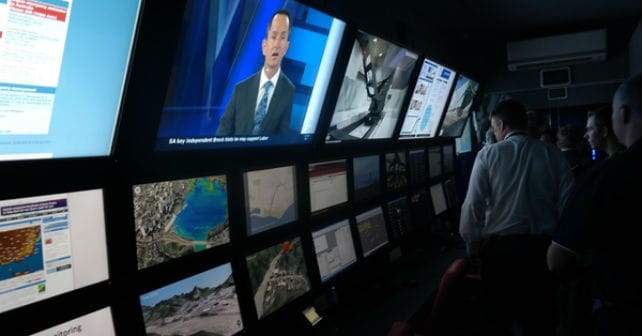Are magnets the future of travel?
Who really wants to stop going on holiday abroad?
Greenbang does not, but realises it’s a kick in the teeth to the planet every time he gets on a plane. You can cut your plane travel for some things – Greenbang did last year a bit, but not for everything. And you don’t always want to either, if you’re really honest.
It’s like all the luxuries we’ve become accustomed to – it’s hard to give up the things you have grown to love.
So unless someone wrenches those things away from you, we need some new answers.
James Governor today says on his blog that Maglev (magnet-powered high-speed train travel) is the way forward for European travel.
Maglev trains are already running in China. They are very quick (speeds of 581km p/h) there, but have been tried and tested all over the world. (Click here to read more about Maglev‘s)
What is this magical transport solution? A European Maglev network. The technology was pioneered originally in the UK and brought to engineering maturity in Germany. The first roll out in Europe comes in Bavaria in 2009. So why are we not being whisked around Europe on these high tech magic carpets? Why does it take the Chinese and the Japanese nations to commercially pioneer Maglev usage?
Why can Europe not commercialise the technology with a European Maglev network? The time is right. The network would help Craig and his peers significantly reduce their carbon footprint opting for Maglev over carbon unfriendly aviation. Here some of the things we came up with that likely represent resistance to the idea :
Some obstacles (mostly political):
1. Airbus and other aviation interest within Europe.
2. The automobile industry within Europe.
3. The Carbon cost of actually building the network.
4. The financial cost.Some of our possible responses :
1. The aviation industry will need to compete not just on cost but on carbon footprint per journey to remain competitive (And yes I expect Maglev fare subsidies initially).
2. The automobile industry must also compete with Maglev for long journeys but not for short trips. Also automobiles will drastically reduce their carbon footprints over the next decade.
3. There will be a large carbon cost to build the Maglev network, think lots of concrete and steel. Perhaps more carbon friendly replacements could help keep the cost down. Long term of course the carbon cost would be recouped by the efficiency of the network.
4. There will be an enormous financial cost spread across Europe, perhaps some of this could be recouped or offset via emission trading.




